Related Research Articles

Édouard Manet was a French modernist painter. He was one of the first 19th-century artists to paint modern life, as well as a pivotal figure in the transition from Realism to Impressionism.

Impressionism was a 19th-century art movement characterized by relatively small, thin, yet visible brush strokes, open composition, emphasis on accurate depiction of light in its changing qualities, ordinary subject matter, unusual visual angles, and inclusion of movement as a crucial element of human perception and experience. Impressionism originated with a group of Paris-based artists whose independent exhibitions brought them to prominence during the 1870s and 1880s.
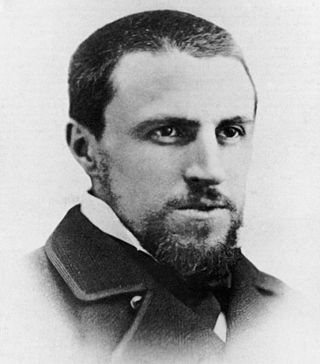
Gustave Caillebotte was a French painter who was a member and patron of the Impressionists, although he painted in a more realistic manner than many others in the group. Caillebotte was known for his early interest in photography as an art form.
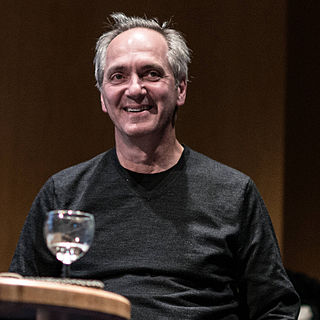
Thomas Struth is a German photographer who is best known for his Museum Photographs series, black and white photographs of the streets of Düsseldorf and New York taken in the 1970s, and his family photographs series. Struth lives and works between Berlin and New York.
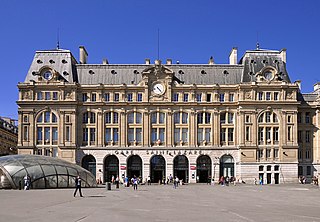
The Gare Saint-Lazare, officially Paris Saint Lazare, is one of the seven large mainline railway station terminals in Paris, France. It was the first train station built in Paris, opening in 1837. It mostly serves train services to western suburbs, as well as intercity services toward Normandy using the Paris–Le Havre railway. Saint-Lazare is the third busiest station in France, after the Gare du Nord and Gare de Lyon. It handles 290,000 passengers each day. The current station building opened in 1889 and was designed by architect Juste Lisch; the maître d'œuvre was Eugène Flachat.

Edward Joseph Ruscha IV is an American artist associated with the pop art movement. He has worked in the media of painting, printmaking, drawing, photography, and film. He is also noted for creating several artist's books. Ruscha lives and works in Culver City, California.

Luncheon of the Boating Party French: Le Déjeuner des canotiers is an 1881 painting by French impressionist Pierre-Auguste Renoir. Included in the Salon in 1882, it was identified as the best painting in the show by three critics. It was purchased from the artist by the dealer-patron Paul Durand-Ruel and bought in 1923 from his son by industrialist Duncan Phillips, who spent a decade in pursuit of the work. It is now in The Phillips Collection in Washington, D.C. It shows a richness of form, a fluidity of brush stroke, and a flickering light.

The Art Institute of Chicago, founded in 1879, is one of the oldest and largest art museums in the United States. The museum is based in the Art Institute of Chicago Building in Chicago's Grant Park. Its collection, stewarded by 11 curatorial departments, includes works such as Georges Seurat's A Sunday on La Grande Jatte, Pablo Picasso's The Old Guitarist, Edward Hopper's Nighthawks, and Grant Wood's American Gothic. Its permanent collection of nearly 300,000 works of art is augmented by more than 30 special exhibitions mounted yearly that illuminate aspects of the collection and present curatorial and scientific research.

Les Choristes is an 1877 pastel on monotype by French artist Edgar Degas. Part of a series of similar works depicting daily public entertainment at the time, it shows a group of singers performing a scene from the opera Don Giovanni, the only work by Degas depicting an operatic performance without dancers.

Paris Street; Rainy Day is a large 1877 oil painting by the French artist Gustave Caillebotte (1848–1894), and is his best known work. It shows a number of individuals walking through the Place de Dublin, then known as the Carrefour de Moscou, at an intersection to the east of the Gare Saint-Lazare in north Paris. Although Caillebotte was a friend and patron of many of the impressionist painters, and this work is part of that school, it differs in its realism and reliance on line rather than broad brush strokes.
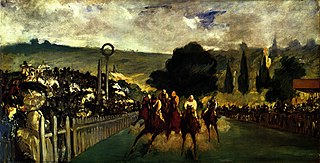
The Races at Longchamp is an 1866 painting by the French artist Édouard Manet. The Impressionist painting depicts the ending of the Second Grand Prix de Paris at Longchamp. It is currently in the collection of the Art Institute of Chicago. This painting is one of four depictions of the same subject that Manet created over four years. The painting reflects the rise of horse racing in France, following the influence of the British. The work is thought to be the first painting to present horses coming directly toward the viewer, and it uses various techniques to reduce the sense of depth.
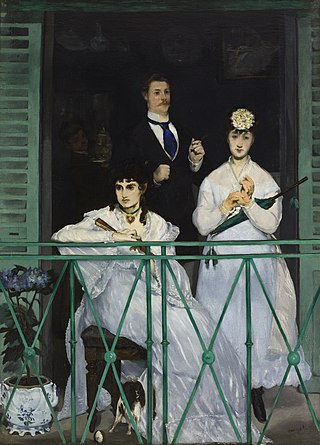
The Balcony is an 1868–69 oil painting by the French painter Édouard Manet. It depicts four figures on a balcony, one of whom is sitting: the painter Berthe Morisot, who married Manet's brother Eugène in 1874. In the centre is the painter Jean Baptiste Antoine Guillemet. On the right is Fanny Claus, a violinist. The fourth figure, partially obscured in the interior's background, is possibly Léon Leenhoff, Manet's son.

Les Orangers is an oil painting by French impressionist Gustave Caillebotte. The canvas measures 155 by 117 centimetres. It was acquired by Audrey Jones Beck and was part of a collection that was on a long-term loan to the Museum of Fine Arts, Houston, before the collection was donated to the museum in 1999. The painting now hangs in the museum building named for Beck.

The Hand of Man is a black and white photograph taken by Alfred Stieglitz in 1902. This is one of the pictures he took concerning urban life and would be published in the first issue of his magazine Camera Work, in January 1903. A note on this issue stated that “The Hand of Man.. is an attempt to treat pictorially a subject which enters so much into our daily lives that we are apt to lose sight of the pictorial possibilities of the commonplace.”

Rodin — The Thinker is a pictorialist photograph made by American photographer Edward Steichen in 1902. It depicts renowned French sculptor Auguste Rodin, in his studio, facing his famous The Thinker sculpture, with his other creation, the Monument to Victor Hugo, as a background.
Pantheon, Rome is a color photograph taken by German photographer Thomas Struth, in 1990. It is part of the series Museum Photographs that he dedicated to museums and their visitors all over the world. It had a series of ten prints of large format, like most of his photographs.
San Zaccaria, Venice is a color photograph taken by German photographer Thomas Struth, in 1995. The photograph was taken inside the San Zaccaria church in Venice, and is part of his series Museum Photographs, dedicated to the interior of several museums and monuments across the world. It has a ten prints edition.
Alte Pinakothek (Self-Portrait) is a color photograph by German photographer Thomas Struth, from 2000. It depicts the Self-Portrait by German Renaissance painter Albrecht Dürer in the wall where it hangs in the Alte Pinakothek, in Munich, Germany, while it is being observed by a viewer, which is the photographer himself. The subtitle of the photograph thus has a double meaning, referring both to Dürer's portrait and to the artists presence. It had a 10 prints edition.
Mailänder Dom (Fassade), Mailand, in English: Milan Cathedral (Façade), Milan, is a color photograph taken by German photographer Thomas Struth, in 1998. It has a ten prints edition.
The Smith Family, Fife, Scotland 1989 is a color photograph taken by the German photographer Thomas Struth, in 1989. It depicts a Scottish family, with eight members, in what appears to be their living room. It is part of a series that Struth dedicated to the depiction of families all over the world, started in 1983. It has a 10 prints edition.
References
- ↑ "Art Institute of Chicago". 27 February 2023.
- ↑ "Art Institute of Chicago". 27 February 2023.
- ↑ "Phillips". 27 February 2023.
- ↑ "Art Institute of Chicago". 27 February 2021.
- ↑ "Art Institute of Chicago". 27 February 2023.
- ↑ "Phillips". 27 February 2023.
- ↑ "Widewalls". 27 February 2023.
- ↑ "Phillips". 27 February 2023.
- ↑ "Art Institute of Chicago". 27 February 2023.